This post may contain affiliate links. Please see our disclosure policy.
Ramp pesto uses flavorful ramp greens to make a spicy, garlicky pesto to get you moving in the spring. Pesto is one of those things that you can make with just about anything green. Wild weed pestos can be made with just about any green that has enough flavor to give a pesto character.
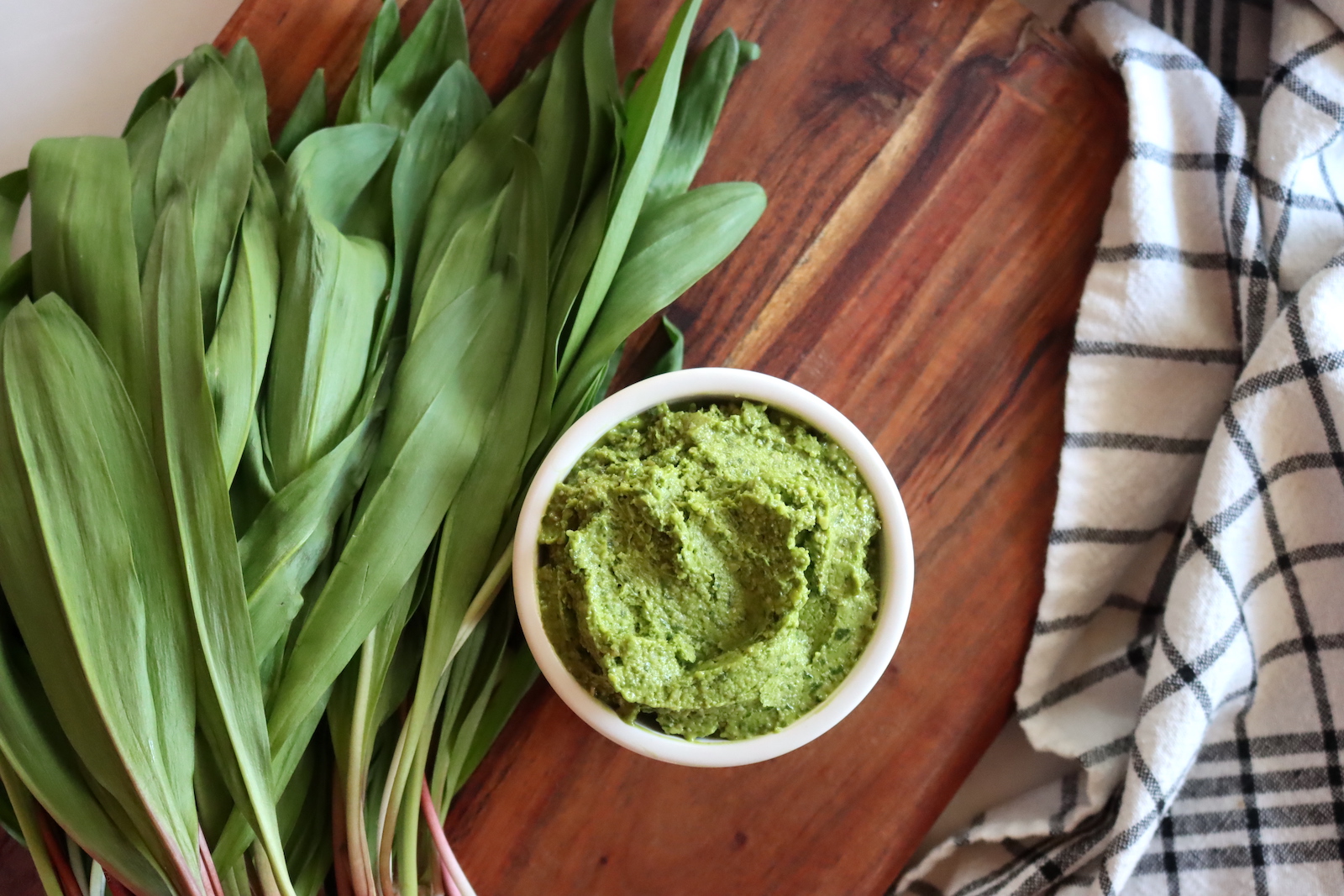
If you’re a fan of pesto and are open to trying new flavors, ramp greens pesto is definitely worth adding to your repertoire.
Why do ramps make great pesto? For starters, their strong flavor adds a unique twist on traditional basil pesto. Plus, ramps are packed with antioxidants and other beneficial nutrients, making this sauce not only delicious but also healthy. It’s perfect for spreading on sandwiches, tossing with pasta, or using as a dip for veggies.
Ramps, in case you aren’t familiar, are wild onions that have a garlicky flavor and can be found in the springtime in wooded areas across the eastern United States. When harvested, only the leaves are used for pesto, resulting in a vibrant green sauce with a pungent kick.
To find ramps, head to a forested area that has moist soil. Look for the distinctive broad leaves with purple-tinged stems, and keep an eye out for the onion-like bulbs as well. It’s important to harvest ramps sustainably, only taking a few leaves from each plant and leaving the bulbs intact so that they can continue to grow for years to come.
And if you can’t find ramps near you? No worries. These tasty greens can also often be found at specialty food stores or local farmers’ markets.
Once you’ve gathered enough ramp greens, it’s time to make the pesto.
Here’s how to do it!
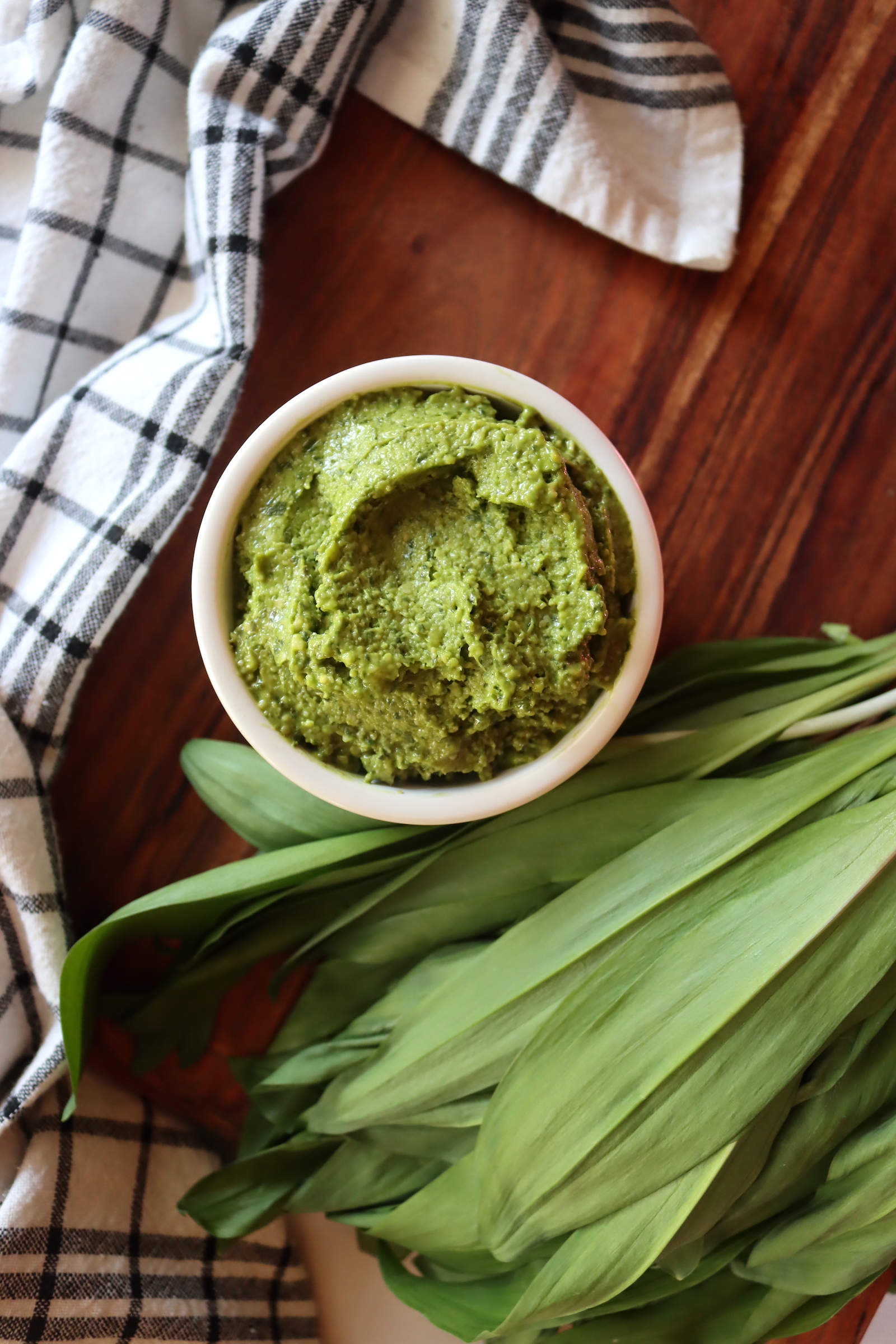
Ingredients for Ramp Greens Pesto
The ingredients for making ramp greens pesto are quite simple. Start with the basics. A good quality olive oil, pine nuts, garlic, and parmesan cheese.
To make one cup of pesto sauce, you’ll need the following:
- 2 cups ramp greens (chopped)
- 1/4 cup pine nuts (can substitute raw sunflower seeds or cashews)
- 2-3 minced garlic cloves
- 1/2 cup finely grated parmesan
- 1/2 cup olive oil (extra virgin)
- Juice of 1/2 lemon, about 1 tbsp
- ¼ to ½ tsp salt, to taste
If you really want to up the ante on the wild foraged nature of this pesto, substitute another nut you’ve gathered. Pine nuts are mostly a west coast thing in the US, while ramps are an East Coast native. In Vermont, we have a nut called a Butternut that looks like a walnut, but it doesn’t have the bitter tannin flavor. It tastes a lot like a pine nut, and it’s a good choice for foraged pesto.
The garlic in this recipe is optional, and it gives the finished pesto extra heat. If you prefer a milder pesto, skip the garlic.
I love this recipe because it allows you to use just the ramp greens, which can be harvested without killing the plant. If you’re foraging your own ramps, taking just 1 leaf from ever few plants is a sustainable way to enjoy their flavor.
At the farmer’s market, though, you’ll often find whole bunches of cleaned ramps, bulbs and all.
In that case, save the bulbs for another use (like pickled ramps), and just use the ramp greens for this recipe.
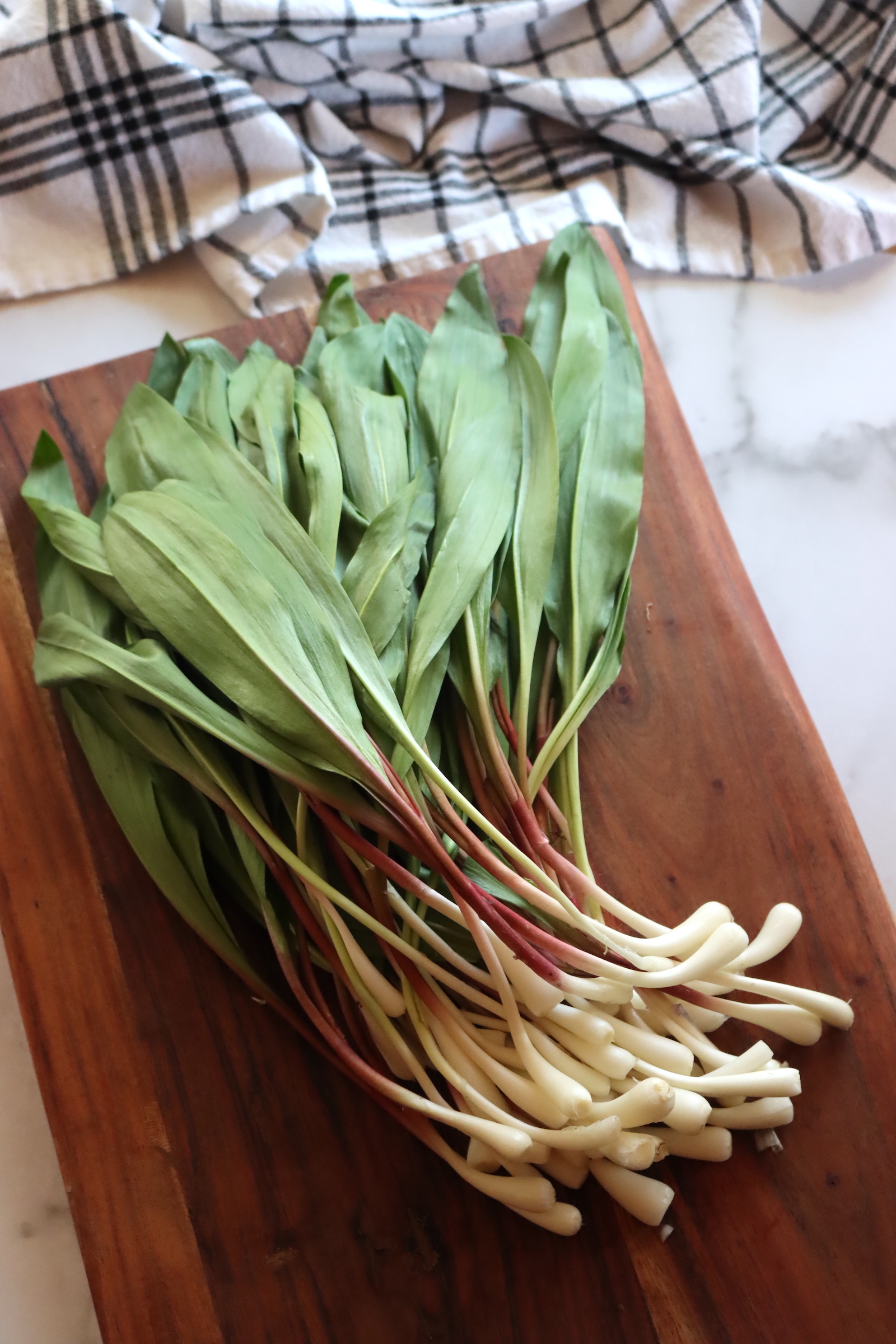
How to Make Ramp Greens Pesto
First things first, you want to clean the ramp greens- you don’t want any dirt or grit spoiling the pesto’s delicious flavor. To clean ramp greens, simply give them a quick rinse under cold water and pat dry with a paper towel.
Next, toss the ramp greens into the food processor and blend until smooth. You might need to stop and scrape the sides a few times to ensure the ramp greens blend evenly.
Once the ramp greens are cut up nicely, add the remaining ingredients into the food processor. For a classic ramp greens pesto recipe, these ingredients usually include pine nuts, garlic, parmesan cheese, and olive oil. However, you can make this pesto with a variety of ingredients, including the aforementioned cashews or sunflower seeds – or even sub in walnuts, almonds or pistachios, if that’s more your style.
Blend all the ingredients until you have a smooth, consistent mixture. Be sure to scrape the sides of the bowl every so often to make sure everything blends evenly. Finally, taste the pesto and add salt if needed to taste.
Consider freezing the leftover pesto in small portions. Ramp greens pesto can keep for a few weeks in the refrigerator, but it lasts longer in the freezer – which means there’s no excuse for not including these delicious and nutritious leaves to your dishes all year round.
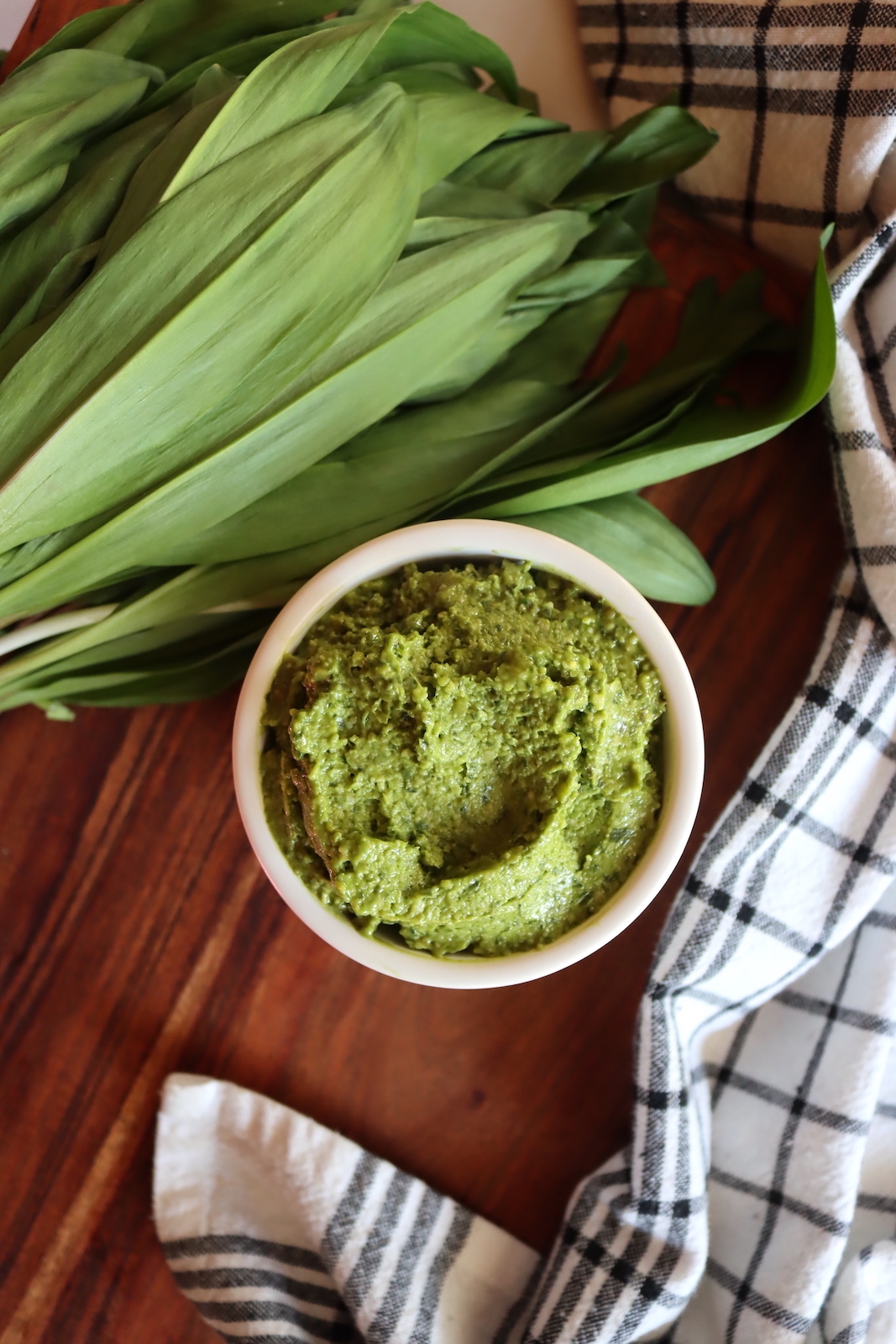
Serving Ramp Greens Pesto
In terms of serving, ramp greens pesto is a heat-and-eat dish. Once you’ve blended together the ingredients, you can serve it right away. If you have leftovers, store them in an airtight container in the fridge for up to a week. The flavors will continue to meld together, making the pesto even more delicious over time.
To serve ramp greens pesto, you have a lot of options! This versatile spread can be served as a dip with crackers or veggies, or as a sandwich spread. It has a lovely garlic and onion flavor that pairs well with mild cheese, fresh tomatoes, and sweet peppers. If you’re feeling adventurous, you can even experiment with adding it to soups or stews.
You can also use it as a marinade. Simply mix the pesto with some olive oil and a splash of lemon juice, then use it to coat chicken, fish, or vegetables before grilling or roasting. The wild garlic flavor of the ramp greens lends itself particularly well to charred or smoky dishes, making this a great (albeit unusual and highly unique!) option for summer cookouts.
Of course, one classic way to serve pesto is with pasta. If you’re looking for a simple, no-cook meal, try tossing cooked spaghetti with ramp greens pesto and some sliced cherry tomatoes. Or, for something heartier, mix the pesto with cooked penne, Italian sausage, and sautéed bell peppers.
One of the great things about ramp greens pesto is that it’s incredibly easy to customize to your taste. If you like a little more heat, add some red pepper flakes or a dash of hot sauce. If you prefer a milder flavor, use less garlic or add some lemon juice to brighten it up. You can even experiment with different herbs and spices, like basil, thyme, or oregano.
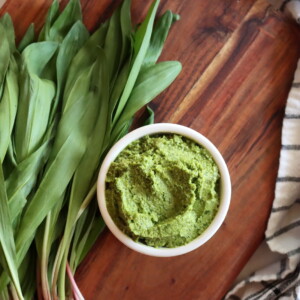
Wild Ramp Pesto
Ingredients
- 2 cups ramp greens, chopped
- 1/4 cup pine nuts, can substitute raw sunflower seeds or cashews
- 2 cloves garlic
- 1/2 cup Parmesan, finely grated and packed
- 1/2 cup olive oil, extra virgin
- 1 tbsp lemon juice, from 1/2 fresh lemon
- 1/2 tsp salt, to taste
Instructions
- Clean the ramp greens - simply give them a quick rinse under cold water and pat dry with a paper towel.
- Toss the ramp greens into the food processor and blend until smooth. You might need to stop and scrape the sides a few times to ensure the ramp greens blend evenly.
- Add the remaining ingredients into the food processor. For a classic ramp greens pesto recipe, these ingredients usually include pine nuts, garlic, parmesan cheese, and olive oil.
- Blend all the ingredients until you have a smooth, consistent mixture. Scrape the sides of the bowl occasionally to make sure everything blends evenly.
- Taste the pesto and add salt if needed to taste.
- Serve and enjoy!
Notes
Nutrition
Nutrition information is automatically calculated, so should only be used as an approximation.
Pesto Recipes
Looking for more ways to incorporate wild greens into homemade pesto?
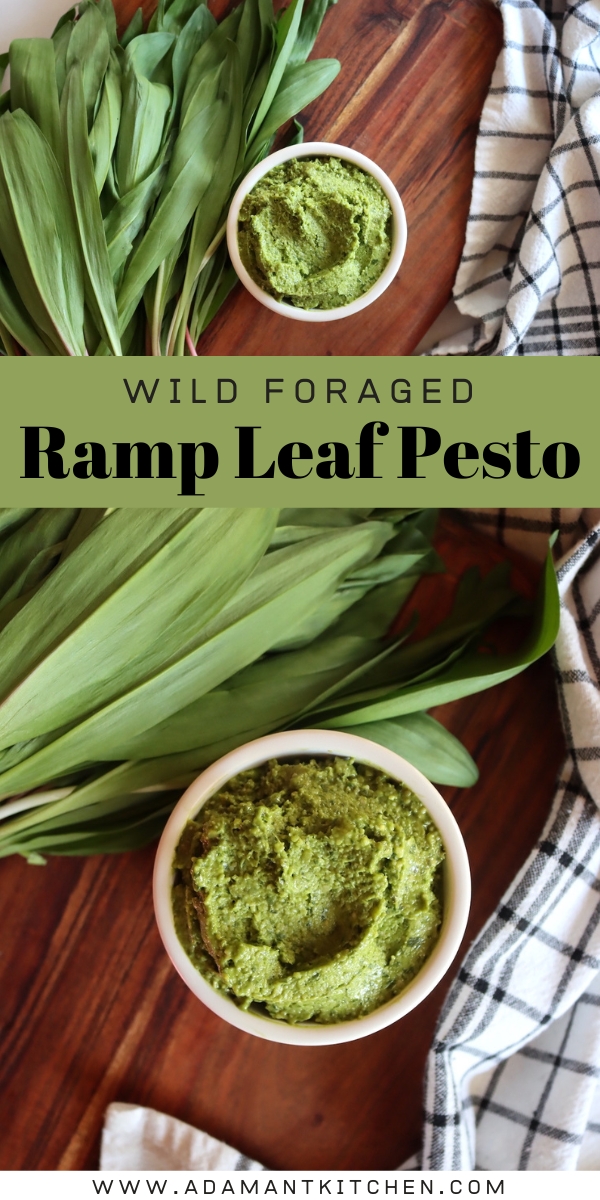
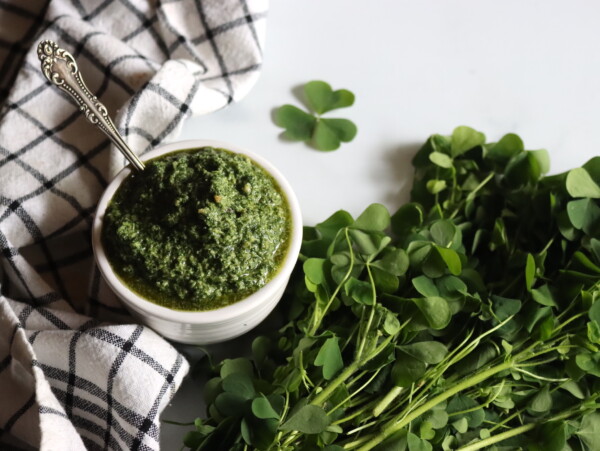
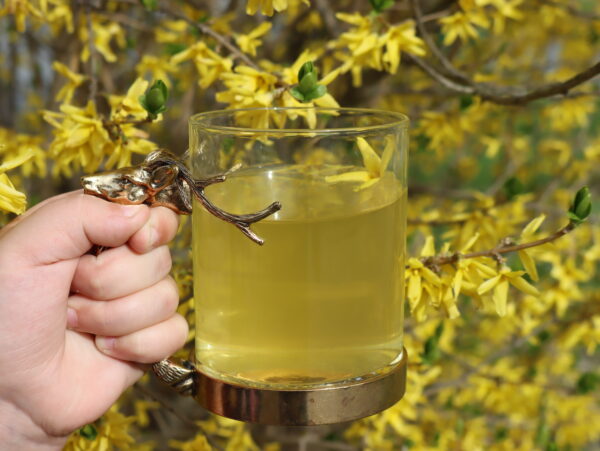
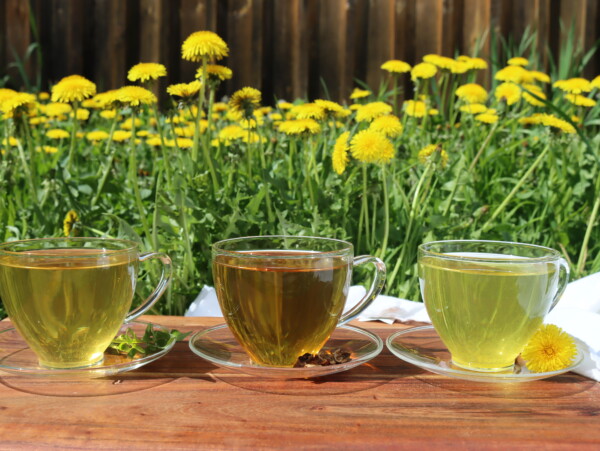
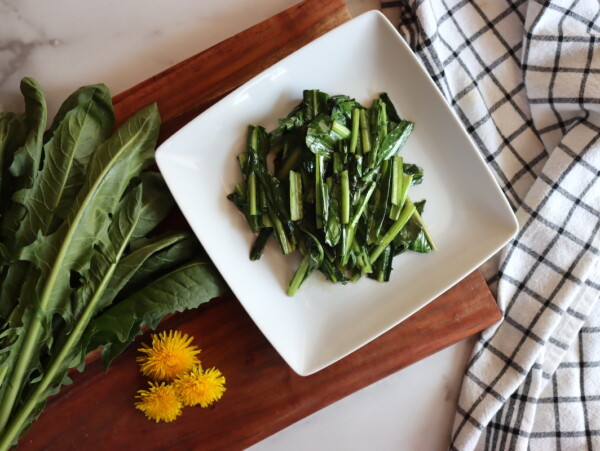
Hello, I follow a lot of your recipes here. Can you tell me if ramp pesto can be canned?
No, it doesn’t work when canned, too much cheese and butter in there. It does freeze wonderfully though.
Please put optional by the garlic in the recipe. Not everyone reads the pre text on recipes.
Wouldn’t the ramp bulb be better than the garlic?
I didn’t use it in mine, but if you have a sustainable harvest of ramps with the bulbs, then by all means, use it.
Can the pesto be frozen?
Yes, for sure! Just thaw and enjoy!
Would you worry about the risk of botulism potentially developing after a couple days since the fresh herbs and garlic will be deprived of oxygen with the oil?
No, I wouldn’t worry. Pesto can typically last one to three weeks refrigerated. However, if you’re worried, pesto freezes well.
Could I include some of the ramp bulbs as a garlic subsitute?
Also what is your attitude on lemon juice or lemon zest, I’m checking out lots of ramp pesto recipe and some include a little lemon.
Lemon is always a good choice!
Sure!